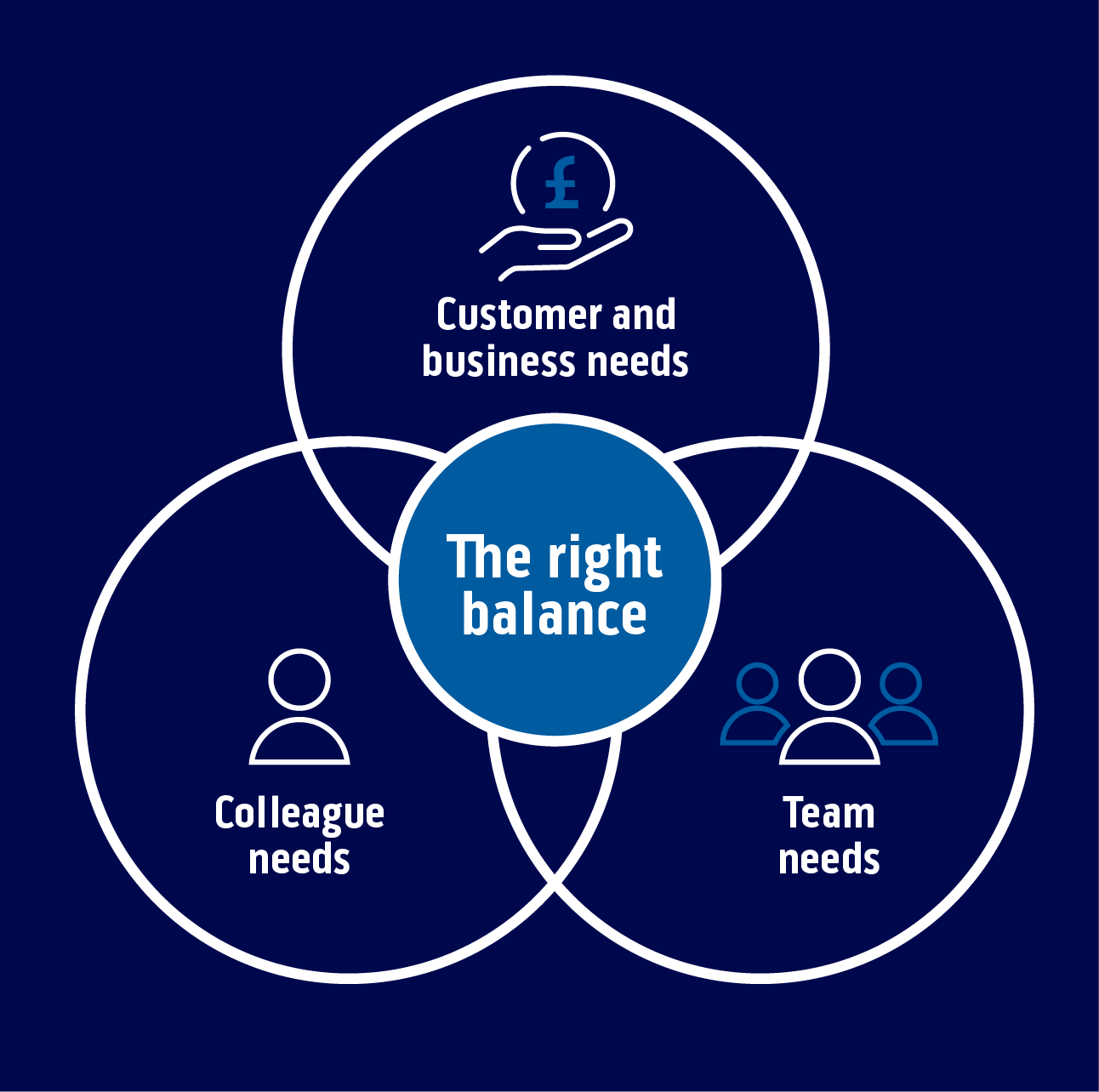As well as supporting an employee’s legal right to request flexible working, there are many reasons for businesses to adopt a flexible working approach. Let’s look at why.
Recruiting the best people
By embedding flexible working, you’ll have a more competitive offering than less flexible rivals.
Keeping and motivating employees
Once you’ve hired and trained a great team, you’ll want to keep them, and flexible working is a great way to ensure they stay happy and engaged throughout their career with you.
Greater flexibility at any stage of life
There are now five generations in the workplace and they are all seeking flexible working for different reasons. At the start of a career, employees may prefer to work in a hybrid way or have a more portfolio-based career (several reduced hours jobs adding up to full-time work).
Parents and carers may need flexible hours to manage school runs and other caring responsibilities. Those nearing retirement may want to change the way they work as part of their transition into retirement, especially as people are living and working longer. According to a report from Legal & General and the Centre for Economics, 47% of the UK workforce will be over 50 by 2030 (PDF, 996KB), whilst other age groups will remain fairly static.
A more diverse and inclusive workplace
Flexible working can enable a more diverse workforce and make your organisation feel more inclusive. By creating more flexible roles and opening vacancies to reduced hours, hybrid or home working, this can make working for your organisation more attractive to a wider pool of people.
Many organisations in the UK are publicly declaring a commitment to equal gender representation – The McKinsey Women in the Workplace 2025 article showed that flexible and hybrid working is a game changer for women, and in particular for those with a disability.
Meeting customer demand
One of the most important things to consider is optimising your workforce so that customers are always well-served while avoiding unproductive capacity during quiet times. Understanding the changing demand of the customers you serve and how you can make sure you have the right people, in the right place, at the right time is at the core of a successful flexible working proposition.
Cutting your business costs
By hiring people who work from home or in a hybrid role, you may be able to reduce your outlay on workspace and contribute to a more sustainable model of work. You can also reduce costs and increase productivity by only hiring employees for the hours you need, not all roles need to be covered on a full-time basis.
